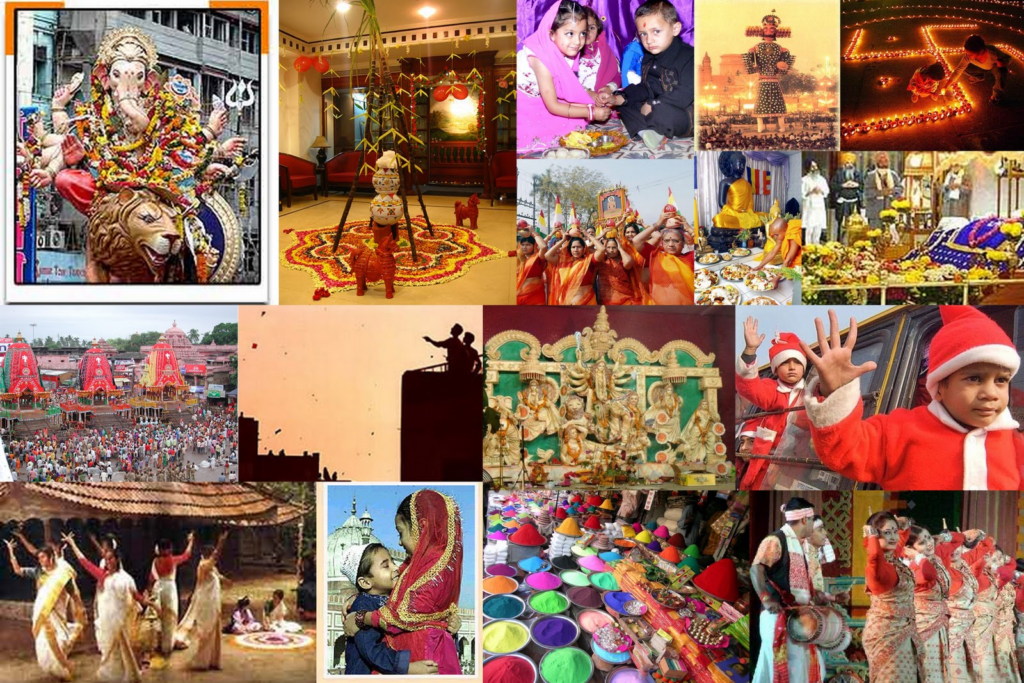
Introduction to India’s rich cultural diversity
India is a vibrant tapestry woven from threads of diverse cultures, languages, and traditions. This rich cultural landscape is beautifully showcased through its myriad festivals that celebrate life, spirituality, and community. Each festival offers a unique glimpse into the country’s soul—an opportunity to experience age-old customs while immersing yourself in joyful celebrations. From breathtaking lights filling the night sky to riotous colors splashed across streets, Indian festivals are not just events; they are experiences that touch your heart.
As we navigate this kaleidoscope of festivities, you’re invited to discover some must-attend cultural festivals in India. These gatherings draw people from all walks of life together in a grand celebration of heritage and unity. Join us on this journey as we explore the captivating essence of these remarkable occasions!
Importance of festivals in Indian culture
Festivals hold a special place in Indian culture, acting as vibrant expressions of the country’s diversity. They are moments when communities come together to celebrate shared values and traditions.
These occasions provide an opportunity for families and friends to gather, reinforcing bonds that might otherwise weaken over time. Each festival is steeped in history and often tells stories from ancient texts or local folklore.
Moreover, festivals promote cultural exchange. People from different backgrounds participate, creating a rich tapestry of experiences and perspectives. This interaction fosters understanding and harmony among various ethnicities.
Additionally, they play a crucial role in preserving traditional arts and crafts. Local artisans showcase their skills during these celebrations, ensuring that age-old practices continue to thrive amid modernity.
The joy evident in every celebration reflects the resilience of Indian heritage—a reminder of how deeply rooted traditions can unite people across generations.
Top 5 must-attend cultural festivals in India:
India is a treasure trove of cultural festivals, each reflecting the nation’s diversity and rich traditions.
1. Diwali lights up the entire country with its vibrant diyas and fireworks. This Festival of Lights symbolizes the victory of light over darkness and good over evil.
2. Holi bursts forth in a riot of colors as people throw powders at each other, celebrating love and friendship. The joy during this festival is infectious.
3. Durga Puja showcases stunning idols and elaborate decorations in honor of Goddess Durga. It’s an artistic spectacle that draws crowds from all walks of life.
4. Onam, celebrated mainly in Kerala, marks the homecoming of King Mahabali with traditional dances, boat races, and a grand feast known as Onam Sadhya.
5. Baisakhi heralds the harvest season in Punjab with lively bhangra dancing, delicious food, and communal spirit centered around gratitude for bountiful crops.
A. Diwali
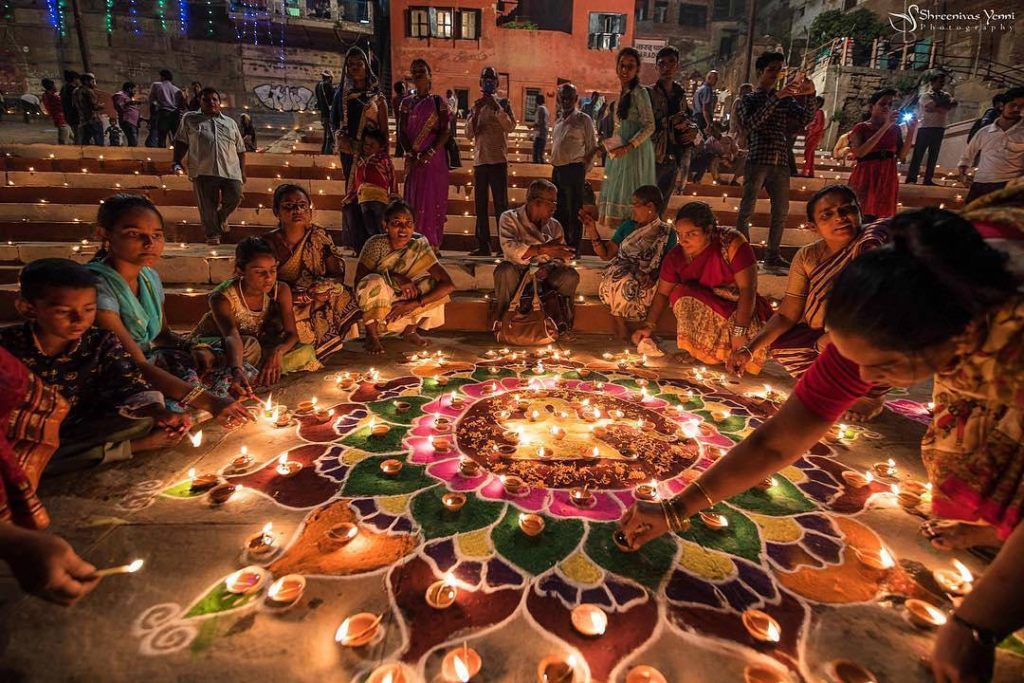
Diwali, known as the Festival of Lights, is one of India’s most cherished cultural celebrations. It signifies the victory of light over darkness and good over evil. Homes are adorned with flickering diyas (oil lamps) and vibrant rangolis.
This five-day festival brings families together for prayers and festivities. The joyous atmosphere is filled with laughter, music, and dance.
On the night of Diwali, fireworks illuminate the sky, creating a mesmerizing spectacle that captivates everyone around. It’s not just about lights; it’s also a time for sharing sweets like ladoos and barfis among friends and neighbors.
Shopping becomes an art during this season as people buy new clothes and gifts to exchange. Each corner resonates with festive spirit as communities come alive in celebration.
The essence of Diwali lies in its ability to unite people across religious boundaries while celebrating Indian traditions wholeheartedly.
B. Holi
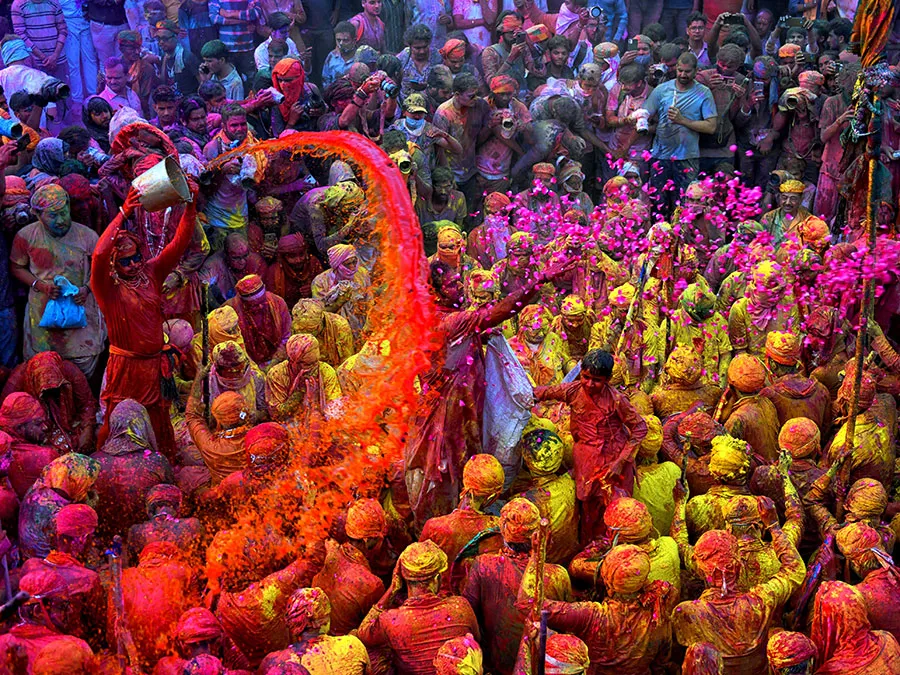
Holi, the Festival of Colors, is one of India’s most exuberant cultural festivals. Each spring, this vibrant celebration brings people together in joyous revelry. Streets become a canvas for colorful powders, and laughter fills the air as friends and families come together to throw hues at each other.
The essence of Holi lies in its spirit of forgiveness and renewal. It marks the triumph of good over evil, symbolized by the legendary tale of Prahlad and Holika. This festival encourages unity among diverse communities.
Delicious sweets like gujiya and thandai add to the festive atmosphere. As you indulge your taste buds, immerse yourself in traditional songs and dances that reflect regional variations across India.
Participating in Holi means embracing spontaneity—dancing with strangers while drenched in colors creates unforgettable memories. The energy is infectious; every grin reflects pure joy amidst a kaleidoscope backdrop.
C. Durga Puja
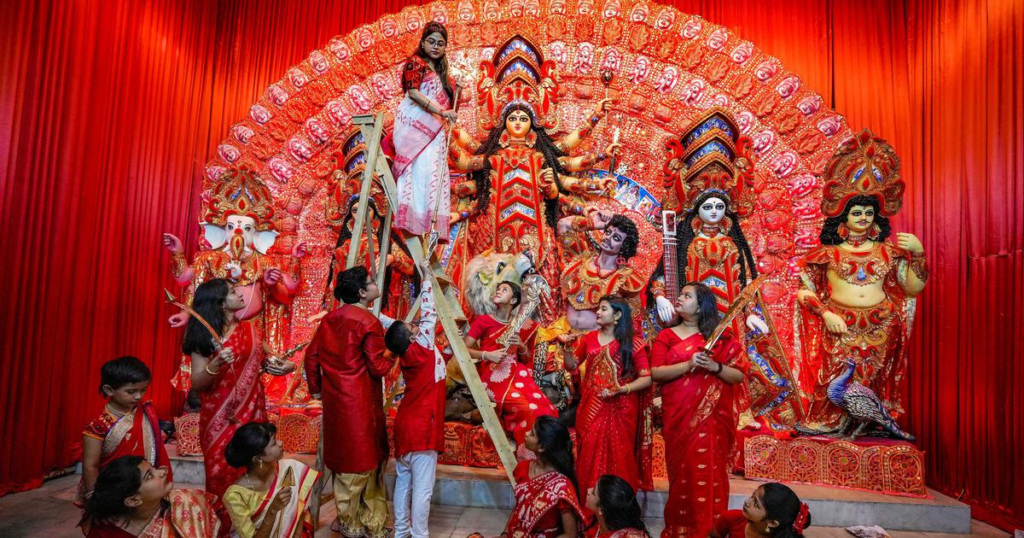
Durga Puja is a celebration that transcends mere festivity; it’s an experience steeped in devotion and artistry. This vibrant festival honors the goddess Durga, symbolizing the triumph of good over evil.
Typically observed in West Bengal, particularly Kolkata, the streets transform into an open-air gallery adorned with magnificent idols and intricate pandals. Each installation tells stories from mythology through stunning craftsmanship.
The air buzzes with excitement as traditional music fills public spaces. People dress in their finest attire to participate in rituals, dance performances, and cultural showcases.
Food plays a central role during Durga Puja. Street vendors serve delectable treats like puchka (pani puri) and mishti doi (sweet yogurt), tempting everyone’s taste buds.
Witnessing this rich tapestry of tradition offers insights into Indian heritage while fostering community spirit among locals and visitors alike. The energetic atmosphere captures hearts, leaving lasting memories long after the last idol immersion.
D. Onam
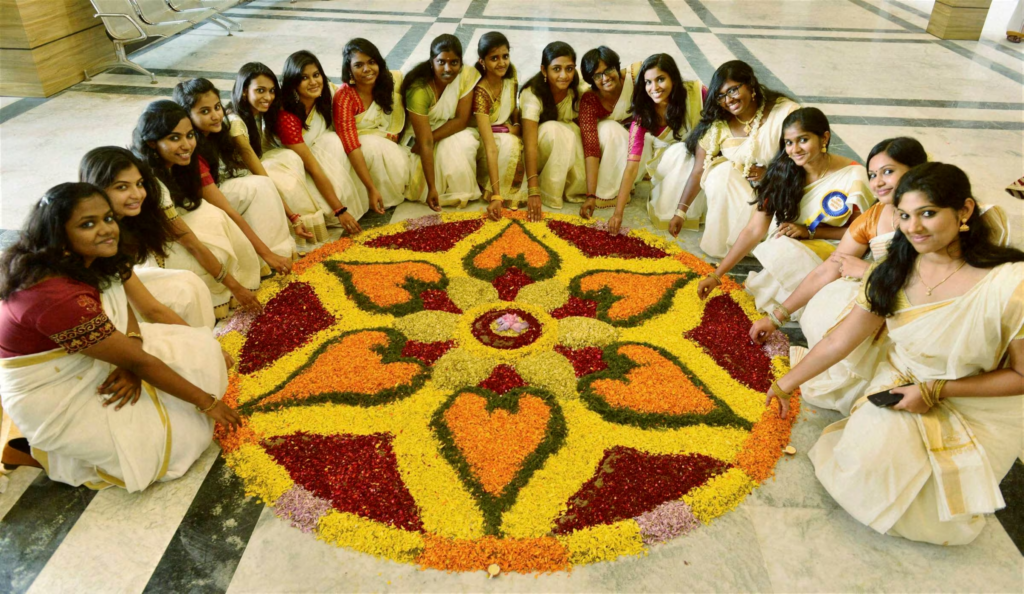
Onam is a vibrant harvest festival celebrated predominantly in Kerala. It usually falls in August or September and marks the homecoming of the mythical King Mahabali. People prepare for this grand event with immense enthusiasm.
The festivities last for ten days, filled with various activities that showcase rich traditions. Beautiful floral arrangements called “Pookalam” adorn homes, while traditional dances like Thiruvathira and Pulikali bring communities together.
Food plays a central role during Onam. The highlight is the elaborate Onam Sadhya, a feast served on banana leaves featuring an array of vegetarian dishes. Each bite tells a story of local flavors and culinary heritage.
As you wander through villages adorned with lights and decorations, the air buzzes with excitement. Music fills the atmosphere as people join hands to celebrate unity amid diversity—an experience unlike any other in Indian cultural festivals.
E. Baisakhi
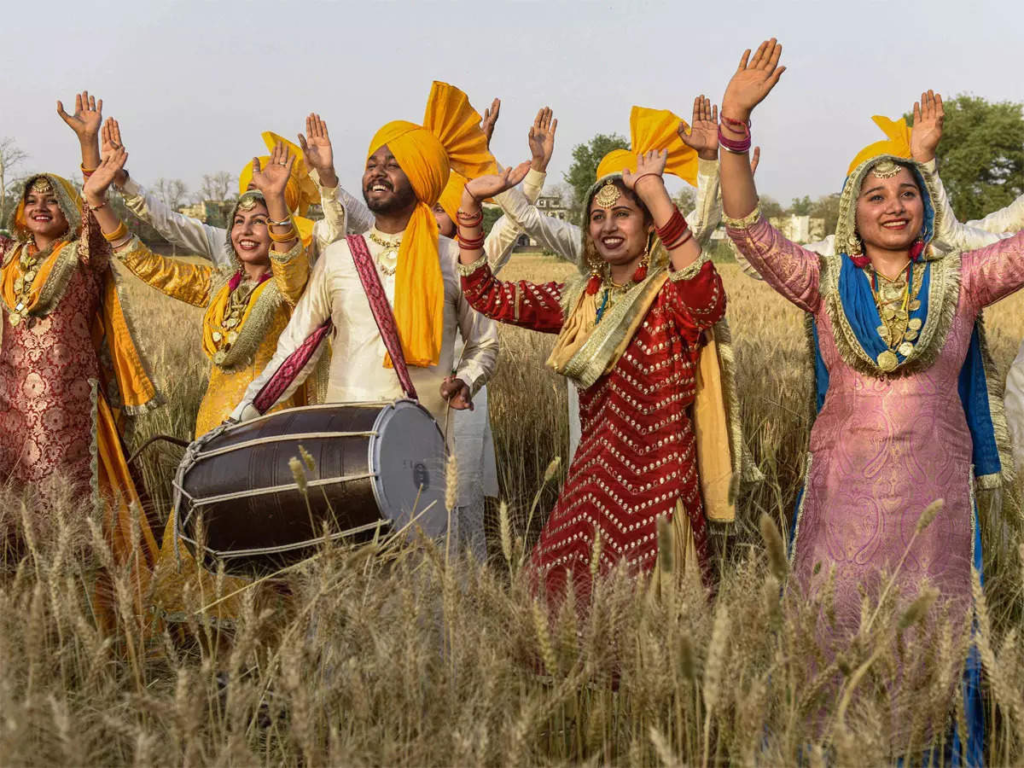
Baisakhi marks the Punjabi New Year and celebrates the harvest season. This vibrant festival usually falls on April 13 or 14, depending on the solar calendar.
Communities come alive with joyous celebrations. People dress in traditional attire, donning colorful turbans and kurtas. Folk dances like Bhangra and Gidda fill the air with energy, showcasing age-old traditions passed down through generations.
The sweet aroma of freshly prepared delicacies wafts through every household. Dishes like ‘Kheer’ (sweet rice pudding) and ‘Samosas’ are must-tries during this festive time.
As families gather for prayers at Gurudwaras, they partake in ‘Langar’, a community meal that embodies equality and togetherness. The spirit of sharing is palpable as people from all backgrounds join in harmony.
Witnessing Baisakhi offers an authentic glimpse into Punjabi culture, celebrating not just agriculture but life itself amidst laughter and joy.
Unique traditions and customs of each festival
Diwali, the festival of lights, is marked by the intricate art of rangoli. Families create colorful patterns at their doorsteps to welcome prosperity.
During Holi, vibrant colors fill the air as people play with powders and water. This joyous celebration symbolizes love and unity among communities.
Durga Puja showcases elaborate idols of Goddess Durga in beautifully decorated pandals. The rituals culminate in an immersion ceremony that signifies victory over evil.
Onam celebrates Kerala’s harvest season with a grand feast called Onam Sadhya. Special boat races add excitement to this culturally rich festival.
Baisakhi heralds the Punjabi New Year, featuring lively Bhangra dances and traditional songs. It honors the spring harvest while acknowledging its historical significance for Sikhs.
Each festival offers a unique glimpse into India’s diverse heritage through its customs and traditions, reflecting deep-rooted values cherished across generations.
Festive delicacies to try at these festivals
Every Indian festival comes with its own set of mouthwatering delicacies that tantalize the taste buds. During Diwali, indulge in rich sweets like ladoos, barfis, and the famous gulab jamun. The festive spirit is incomplete without sharing these delights with family and friends.
Holi brings a burst of color not just visually but also gastronomically. Savor traditional treats such as gujiya—sweet dumplings filled with khoya—and thandai, a refreshing drink infused with spices and nuts.
Durga Puja showcases Kolkata’s culinary finesse. Try out pithas—rice flour cakes often stuffed with coconut or jaggery—as families gather to feast together after prayers.
Onam’s grand Onam Sadya features an elaborate vegetarian banquet served on banana leaves, showcasing flavors from various regions of Kerala.
Baisakhi celebrates harvest time in Punjab with delectable dishes like sarson da saag paired perfectly with makki di roti. Each festival offers a unique culinary experience steeped in tradition.
Experiencing the vibrant energy and colors of Indian festivals
The vibrancy of Indian festivals is like nothing else. Streets come alive with a splash of colors, music, and laughter. Each festival transforms the landscape into a canvas of joy.
As you walk through bustling markets, the air fills with the aroma of traditional sweets and savory snacks. Every corner offers something new—artisans showcasing their crafts or musicians playing soulful tunes.
Participating in these celebrations allows you to connect deeply with local communities. You’ll find yourself dancing to folk songs or joining in lively processions that celebrate age-old traditions.
Brightly decorated homes invite everyone inside for shared meals and heartfelt conversations. It’s an experience that transcends mere observation; it’s about feeling every moment resonate within you.
Shimmering lights illuminate night skies during Diwali while vibrant powders paint faces during Holi. The energy is contagious, leaving memories etched in your heart long after the festivities conclude.
Conclusion
India’s rich tapestry of cultural festivals showcases the country’s incredible diversity and deep-rooted traditions. Each celebration offers a unique glimpse into the various customs, rituals, and beliefs that bind communities together.
From the dazzling lights of Diwali to the vibrant colors of Holi, every festival is steeped in meaning and history. The rhythmic beats during Durga Puja resonate with devotion, while Onam’s festivities highlight unity and harmony among diverse groups. Baisakhi marks not only the harvest season but also serves as a reminder of communal bonds.
Trying traditional delicacies during these occasions enhances your experience. Sweets like gulab jamun or savory dishes such as biryani reflect regional flavors that add depth to each celebration.
Experiencing Indian festivals means immersing yourself in joyous atmosphere filled with laughter, music, and dance. The energy is infectious; it invites participation from everyone around you regardless of background or belief.
Attending these must-stop cultural festivals provides an unforgettable opportunity to witness India’s heritage firsthand. Embrace this journey through tradition, color, and flavor as you celebrate alongside millions who cherish their roots passionately.
Know more about Cultural Festivals of India
For more such content, keep visiting QAWire


